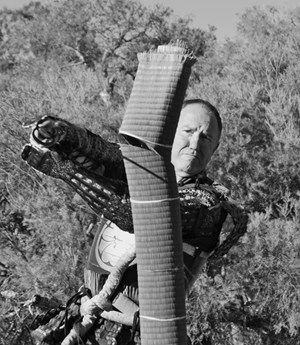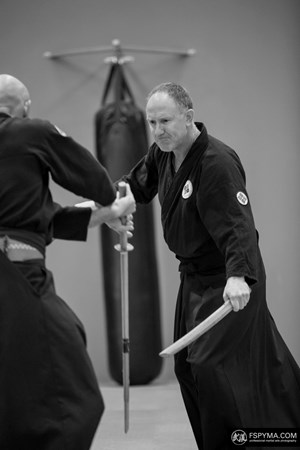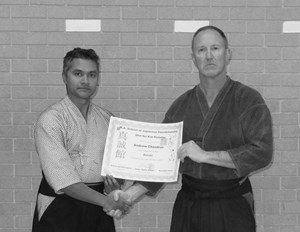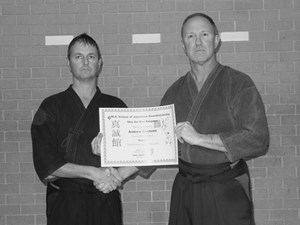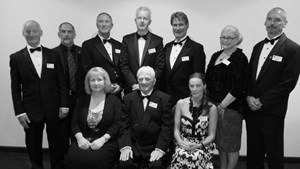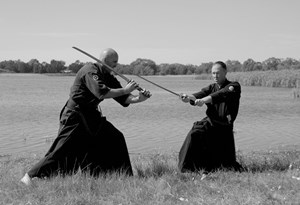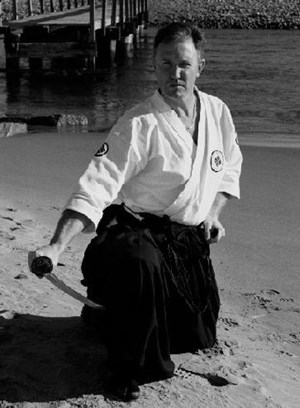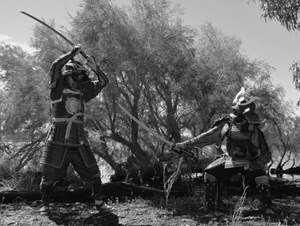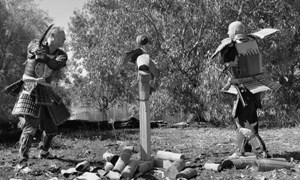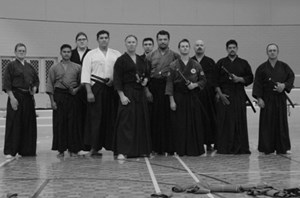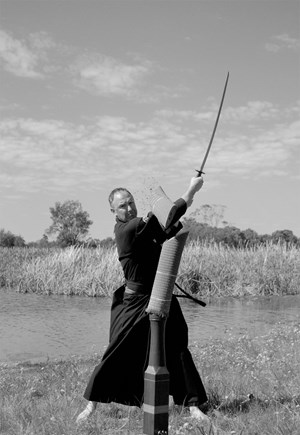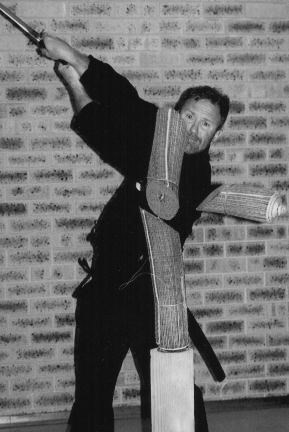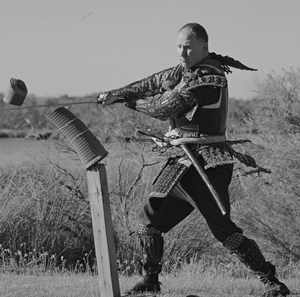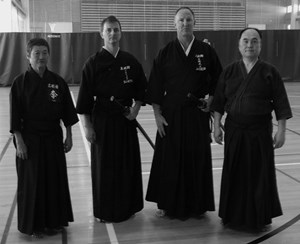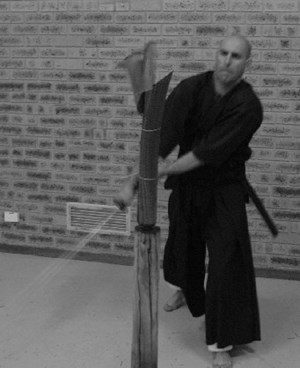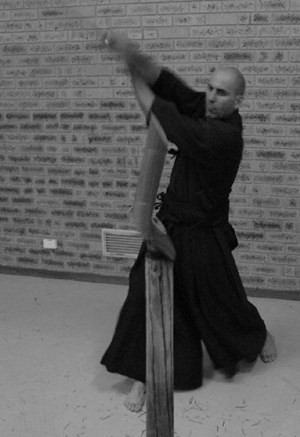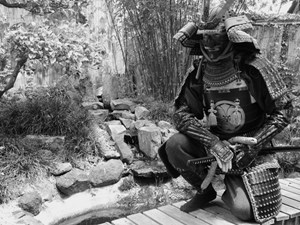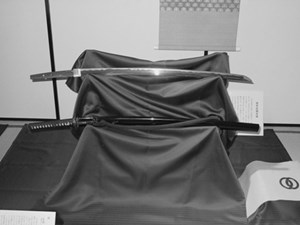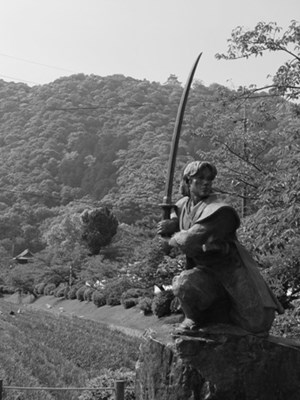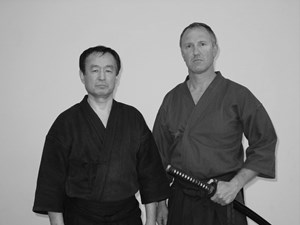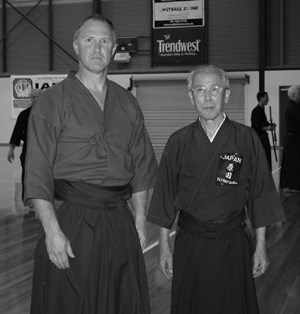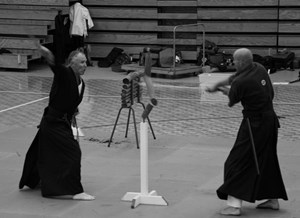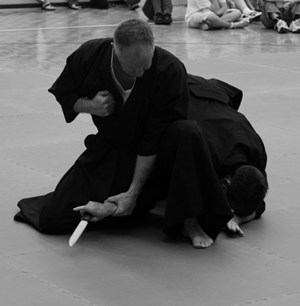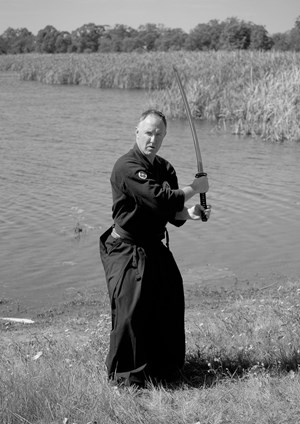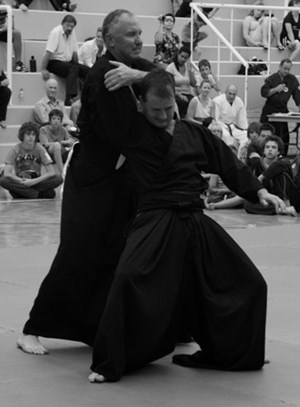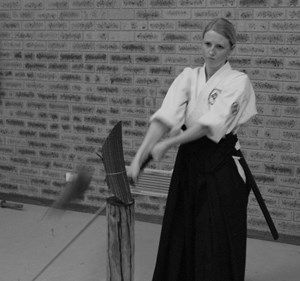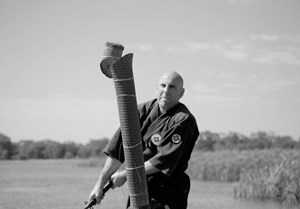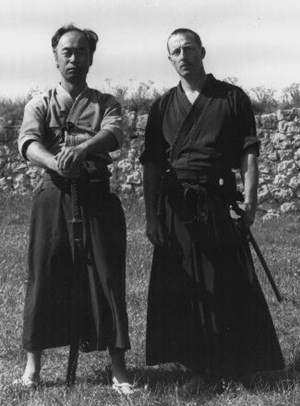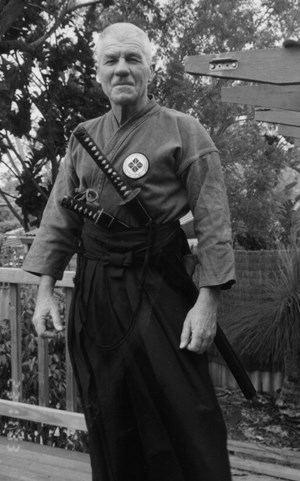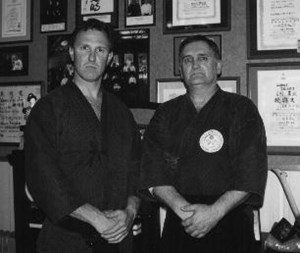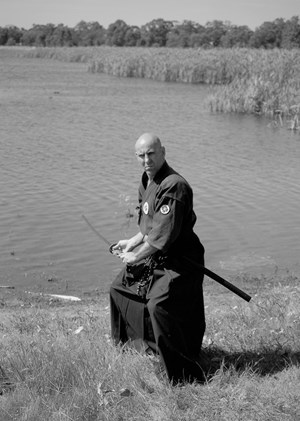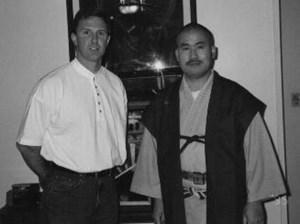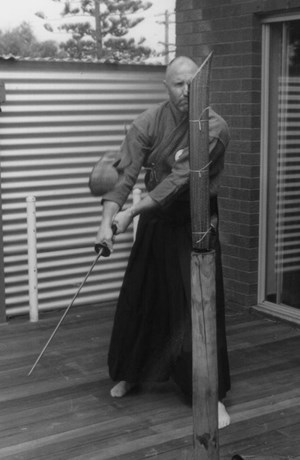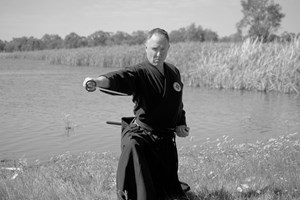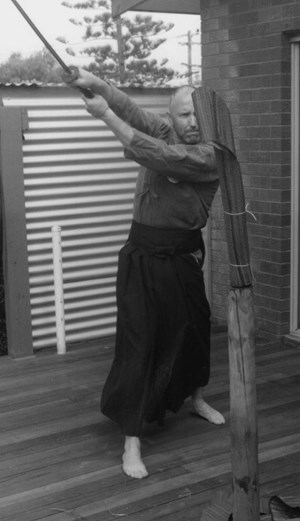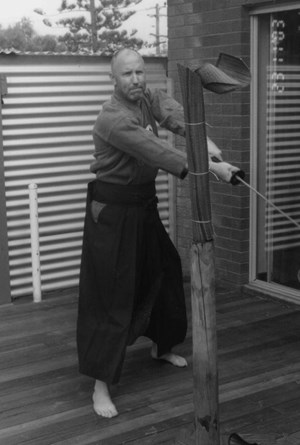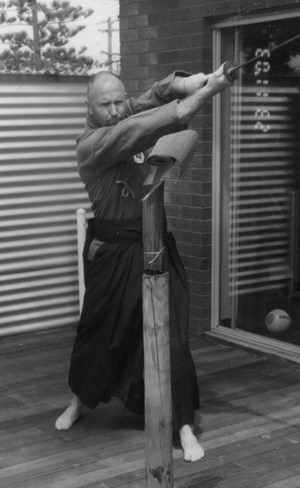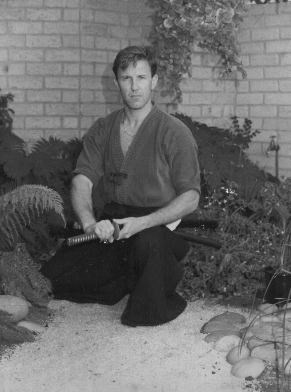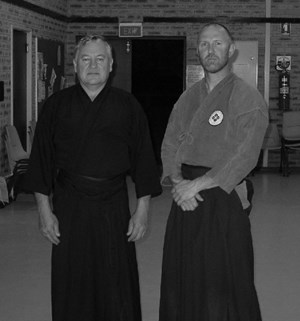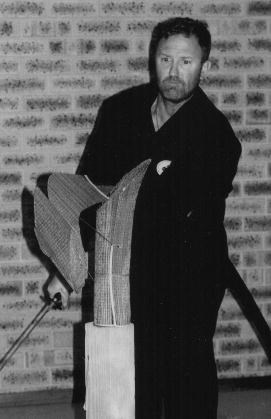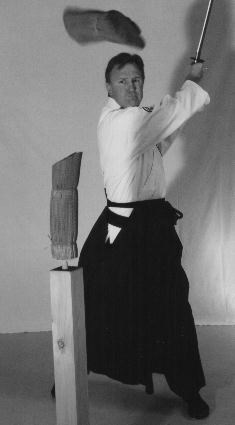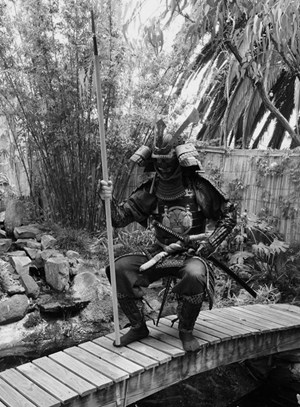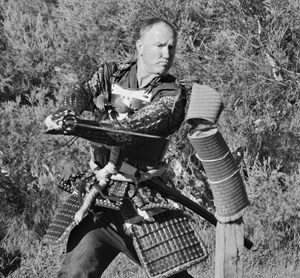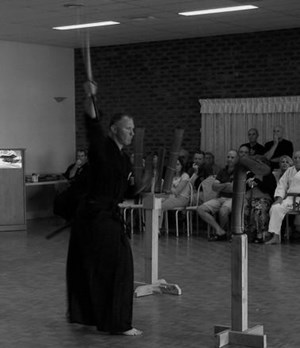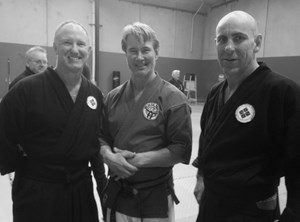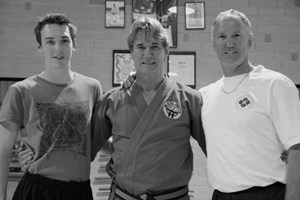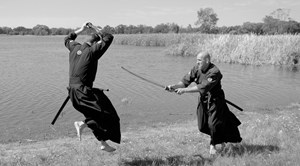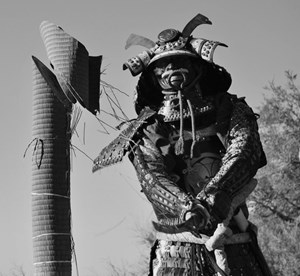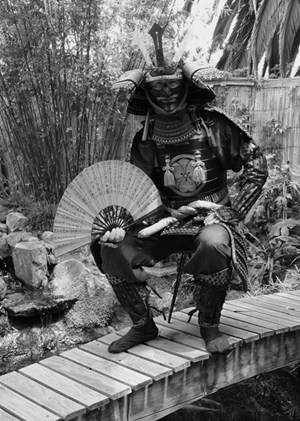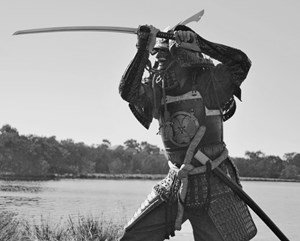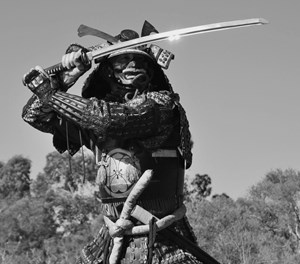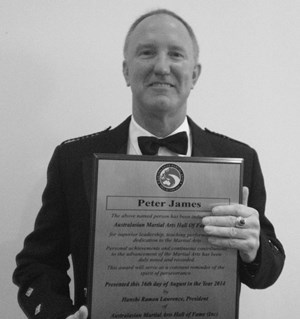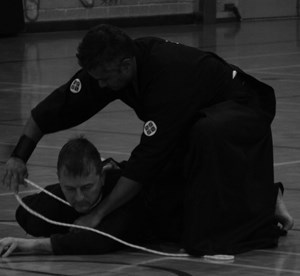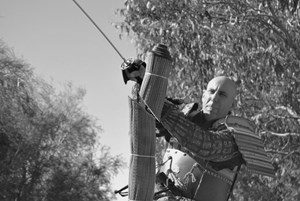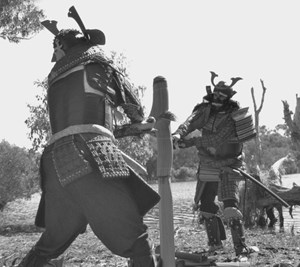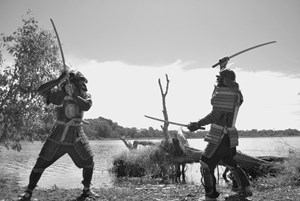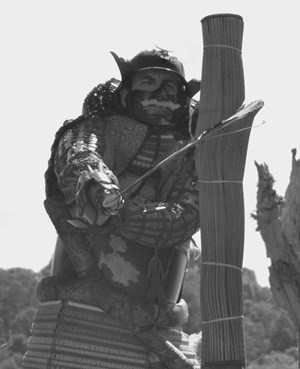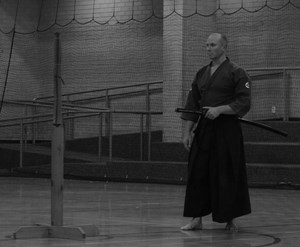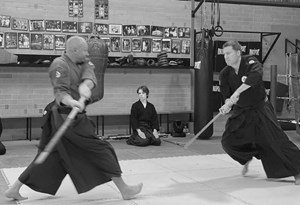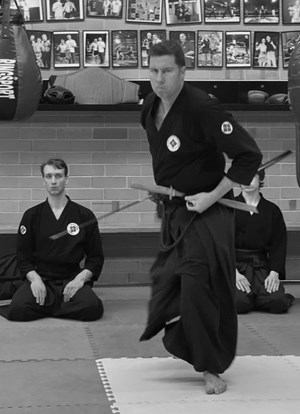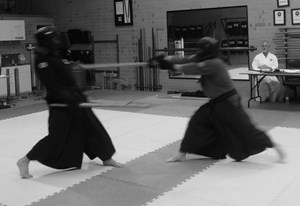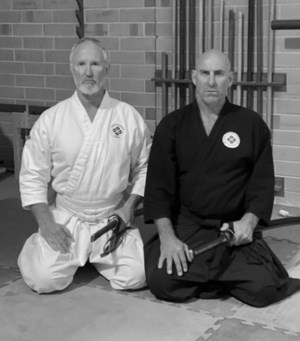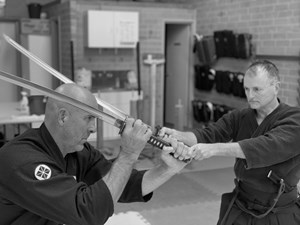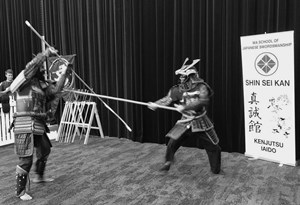History of the Sword
The Japanese sword holds an enormous amount of reverence both in Japan and within Martial Arts circles around the world. To most martial artists, the sword holds some intrigue and mystic. It's training has the reputation for being very disciplined and precise, but lacking in modern application, consequently devotees around the world are few in comparison to the empty hand systems. However, it still generates a lot of interest for martial artists and people with an interest in history or militaria.The sword itself has a fascinating history stretching back nearly 1500 years. The oldest Japanese swords still in existence date back to the 4th century. The blades are straight, and based on the Chinese and Korean swords of the same period. Initially the Japanese swords were of poor quality and not tempered well. The quality swords of the era were brought into Japan from the mainland. As more and more sword smiths arrived in Japan from China and Korea, they taught the craft to the Japanese. Originally the sword smiths made swords close to sources of iron; the first sites for sword making were Yamato, Mutsu, and San-in.
As the warrior class of Japan began to take power in the 9th century (Heian Period 794 - 1191), and internal fighting and turmoil was rife, the sword shape began to change to a curved blade. Although the reasons for the change are not known, the type of warfare certainly influenced it. During this time it changed from fighting on foot to fighting from horseback; the slashing weapon was more effective. The swords of this period were up to 4 feet long. The blade went from a stabbing and cleaving weapon to a cutting and slashing weapon. It was also during the Heian period that the quality of the swords began to improve enormously.
One of the popular legends is that Amakuni and his son Amakura were standing outside their sword smithing shop when the army was returning from battle. As a sword maker to the Emperor's army Amakuni was expecting to be acknowledged by the Emperor, as had been the norm in the past. However, in this case he was snubbed by the Emperor and soon understood why when he saw many of the sword blades carried by the soldiers were broken. He was determined to research and build the perfect sword. After a period of sabbatical and reflection, Amakuni and his son went about developing a superior weapon. The next summer when the Emperor returned from another battle, none of the swords were broken and the Emperor passed and said to Amakuni, "you are an expert sword maker, none of the swords you made failed in battle". What Amakuni is said to have developed is a style of sword that was hard enough to hold an edge but flexible enough not to break or shatter, the paradoxical combination needed for a good blade. The Japanese did this by creating a sword from two different types of metal. The core was made of steel with a high carbon content; this makes the steel very hard but very brittle. Folding it over itself over and over again to create steel with up to 30,000 laminations strengthened this hard core. Around this hard core, softer and more flexible steel was wrapped. The two steel were welded together and the edge was tempered (tempering created the Hamon on the blade). The end result was a blade with exceptional edge holding and cutting ability, with the flexibility to withstand continuous contact with other weapons, or armour on the battlefield.
The method of fighting during this period was by individual combat, where one warrior would ride out and challenge a worthy opponent from the other side to engage in mortal combat. However, in 1274 and 1281 the Mongols invaded Japan. The Mongols did not fight by the traditional Japanese methods of challenges and individual combat. Consequently, the Japanese quickly learnt that group warfare was the only way to beat the invaders. Although the Mongol armies were beaten primarily by the weather (Kamekaze, the divine winds), the Mongol invasion brought about a conscious need for a strong national defence, and sword smiths sprang up all over the country. Across the periods Kamakura Period (1192 1336) and Muromachi Period (1337 - 1573) is considered the Golden Age of sword making (specifically 1294 1427). Sword smiths such as Masamune, made swords that have never been surpassed in beauty, strength and resilience. The swords of this period were known as Tachi and were hung suspended from the belt with the edge down. Five famous schools of sword making arose, their location was based on proximity to the need for swords (centres of administration), easy access to ore and charcoal, a plentiful supply of good water and a cool climate. The five schools were Bizen, Yamashiro, Yamato, Soshu and Mino.
Late in the Muromachi Period saw the rise of internal warfare once again, this led to over 100 years of civil wars in Japan as warlords fought for land and power. The enormous requirement for weapons during this period meant a rise in the number of school and a sharp decline in the quality of the swords. Swords from this period are considered inferior, and the skills of the sword smiths from the golden age were lost, some say forever.
In 1543 the gun was introduced to Japan and many sword smiths became gunsmiths. The superiority of the gun over the sword in battle was not lost on the Japanese. The gun was pivotal in several battles of the period, and certainly advanced the unification of the country by Hideyoshi at the end of the 16th century. To further cement his position, Hideyoshi issued an order that all swords owned by farmers were to be collected and no farmer would be allowed to own swords in the future. The disarming of the peasants and establishing the sword as the mark of the Samurai warrior class led to a new era in Japanese history. The quality of swords produced after the end of the civil war period began to rise sharply, although many contend it would never reached the quality of the 'Golden Age'.
Ieyasu Tokugawa positioned himself as Shogun after the Battle of Sekigahara in 1600; this was the last major battle on Japanese soil and heralded over 400 years of peace for the Japanese people. Swords made during this period are known as Shin-to, which literally means New Sword. Sometime around this period the swords began to be worn edge up to facilitate a quick drawing by the foot soldier. The move from Kenjutsu (sword fighting) to Iaido (sword drawing) reflects this period of peace while supporting the lasting significance of the sword. For the sword itself, new styles and production methods, including techniques and steel imported from Holland and Portugal, led to the production of high quality blades, although the absence of war kept demand low.
During the Edo period, Japan saw no need to conquer the mainland, nor felt any threat from outsiders. The gun was rejected by the Samurai as being too impersonal, or for killing without honour. In fact there was really no need for weapons at all. The gun was rejected, but the need for swords except as a status symbol, was also non-existent.
Through the years of Tokugawa or Edo period, the sword was the symbol of the Samurai class; Samurai were the administrators of the country. As a status symbol two swords were worn, large (Katana) and shorter (Wakisashi). The Wakisashi was not made before this period, and overall, the actual battle quality of the sword began to decline as the aesthetic value of the sword increased. Swords were characterised by a great deal of bravado in their decoration with less attention paid to the ability of the blade. This style of sword making heralded the Shin Shin-to (new new sword) era which began in about 1781 and lasted until the end of the Edo period in 1867.
During the Shin Shin-to period sword production was nearly at a stand still as older swords were refitted, and sword mounting and fitting became a prosperous business. The status of the sword was finally one of social standing and costume rather than as a combat weapon.
In 1876 all civilians were ordered to give up carrying swords entirely this lead to the Satsuma rebellion by the Samurai of the day, swords of this era are very poor quality. The few sword smiths left literally went out of business. Japanese military expansion into Asia at the beginning of this century again gave raise to the craft of sword making. Hand crafted swords of this period are known as Gendaito (modern swords), they are made the traditional way by creating a folded hard core and surrounding it in a soft casing, but the craft had already been lost twice and sword smiths today are still recovering. Many of the swords we see today are from the Second World War and are made from steel but not folded. Although the steel is good quality and usually individually made, they are not made in the traditional way.
There are 13,000 recorded Japanese sword smiths throughout history. Given that each sword smith made approximately 200 blades, it is estimated that 2.5 million swords have been made. Many have been lost, but interestingly, there are reputed to be more Japanese swords in the USA than in Japan. As with many things the Japanese do the swords smiths throughout history are well documented and recorded. This makes sword collecting and appreciation an interesting, if not expensive, pastime.
The history of the Japanese sword follows closely the story of war and peace in Japan, much the same way as weapons technology affects our lives today. The Japanese sword is one of the three sacred treasures of the imperial throne and remains the supreme symbol of the Japanese martial spirit, and of the Samurai (and nations) vigour and pride.
